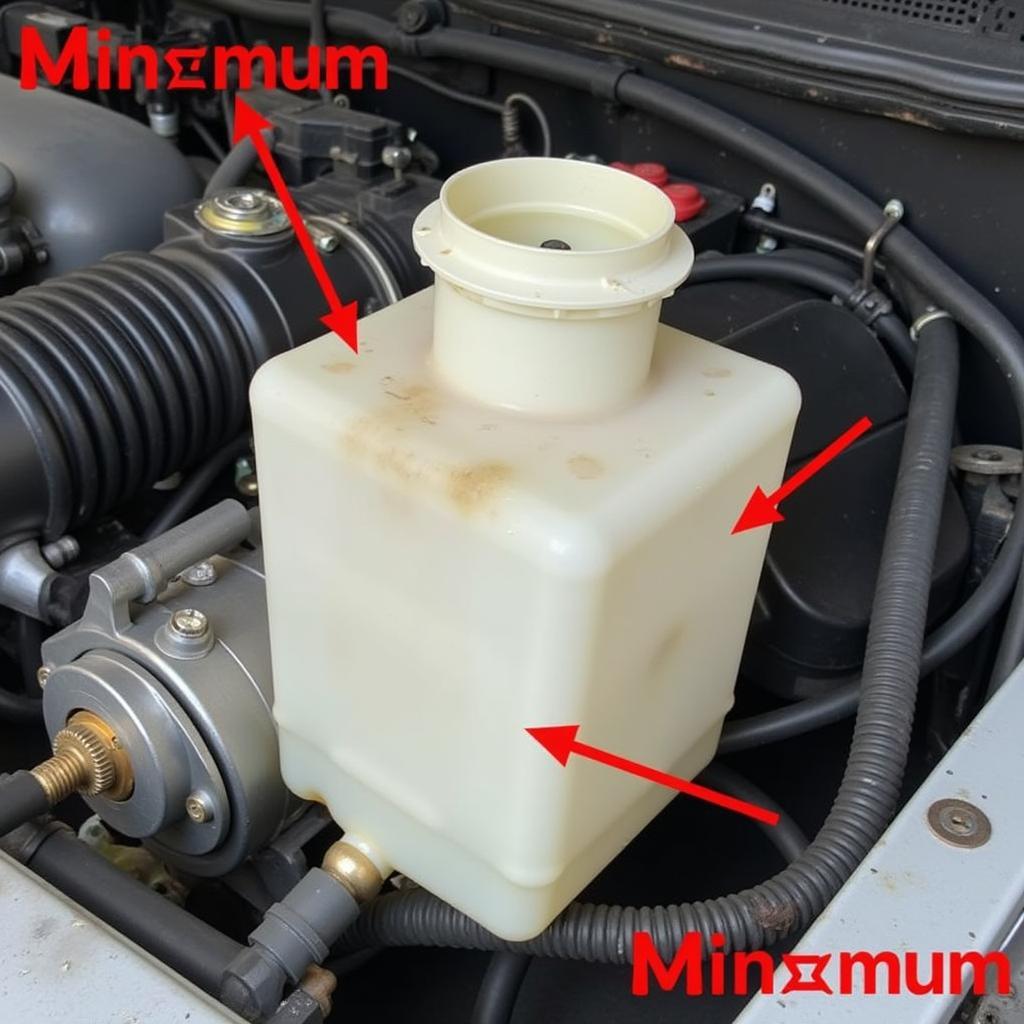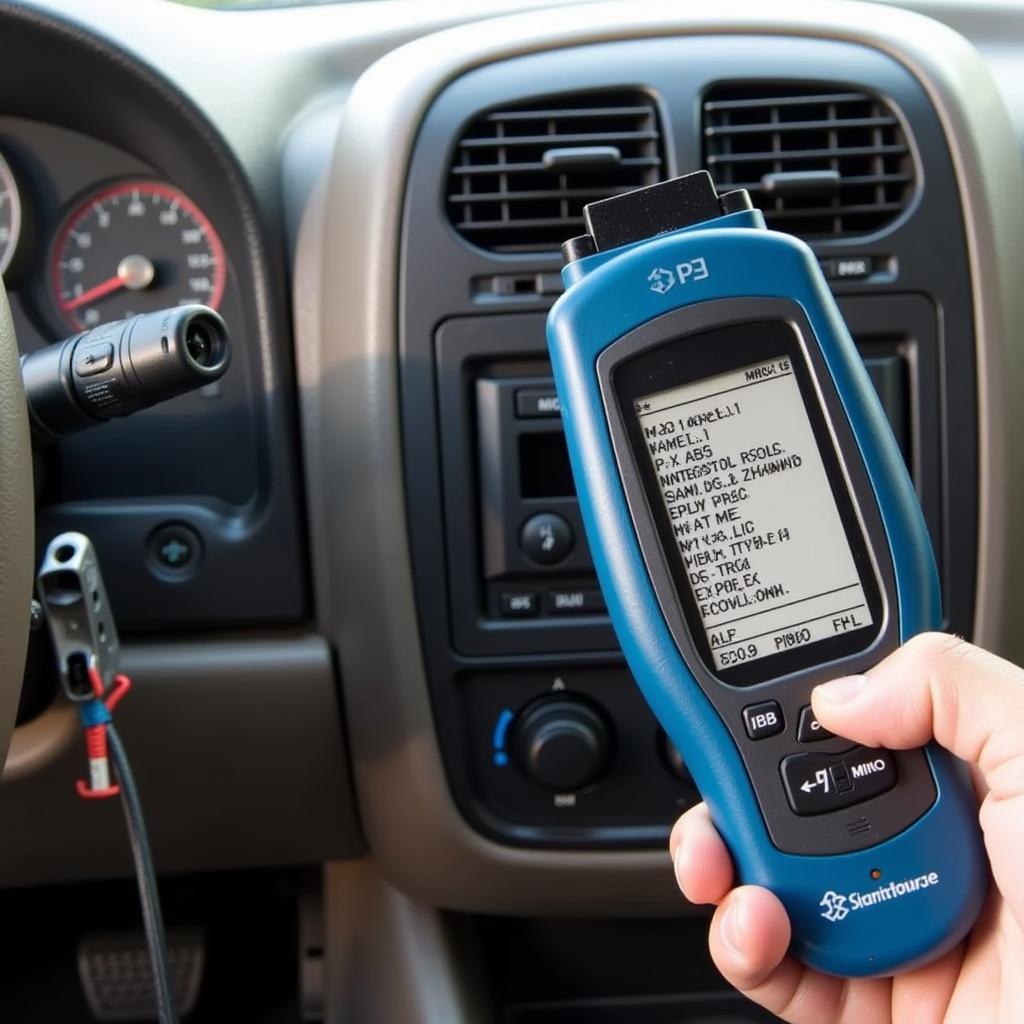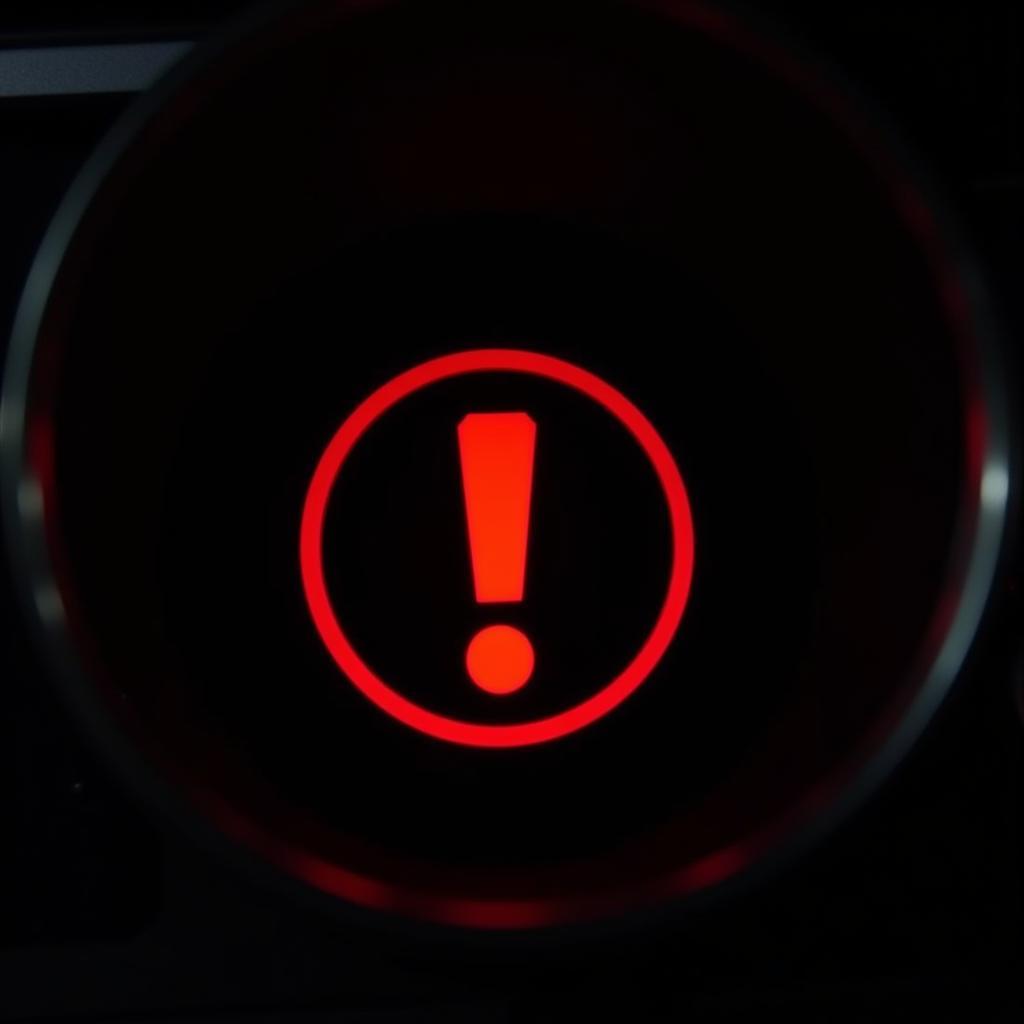The dreaded brake warning light on your 2002 Dodge Durango can be a cause for concern. This article will guide you through the potential causes, diagnostic steps, and solutions for a 2002 Dodge Durango brake warning light, offering expert advice on how to address this issue effectively. Whether you’re a DIY enthusiast or prefer professional assistance, understanding the underlying problem is crucial for safe and reliable braking performance.
Addressing the brake warning light promptly is vital for your safety and the longevity of your Durango. A persistent light indicates a potential problem within your braking system, and ignoring it could lead to more serious issues down the road. Let’s dive into the common culprits behind this warning light.
One of the most frequent causes is low brake fluid. Your Durango’s braking system relies on hydraulic pressure, and insufficient brake fluid can significantly compromise its effectiveness. Checking your brake fluid level is a simple yet essential first step. Locate the brake fluid reservoir, typically near the firewall on the driver’s side. If the level is low, adding brake fluid might resolve the issue. However, consistently low brake fluid might indicate a leak, which requires immediate professional attention. See your mechanic immediately if you suspect a leak.
Another potential cause is worn brake pads. Brake pads are designed to wear down over time, and as they reach their limit, a sensor triggers the warning light. Inspecting your brake pads visually will reveal their condition. If they appear thin or worn, replacement is necessary. Consider replacing the rotors as well if you notice significant wear or damage.
 2002 Dodge Durango Brake Fluid Reservoir Location
2002 Dodge Durango Brake Fluid Reservoir Location
A faulty brake light switch can also trigger the warning light. This switch is responsible for activating your brake lights when you press the pedal. A malfunctioning switch can disrupt the signal and illuminate the warning light. Testing the switch with a multimeter can confirm its functionality. If faulty, replacing the switch is a relatively straightforward procedure.
Sometimes, the issue might lie within the ABS (Anti-lock Braking System). The ABS prevents wheel lockup during hard braking, enhancing control. If the ABS module malfunctions or a sensor detects an issue, the warning light may illuminate. Retrieving diagnostic trouble codes (DTCs) using an OBD-II scanner can pinpoint the specific problem within the ABS. 02 dodge durango brake warning light is a helpful resource when troubleshooting these issues.
Diagnosing Your 2002 Dodge Durango Brake Warning Light
Begin by checking the easiest possibilities first, such as low brake fluid and worn brake pads. If these are not the culprits, move on to checking the brake light switch.
Checking the Brake Light Switch
The brake light switch is a crucial component that signals the brake lights to illuminate when the brake pedal is depressed. If this switch malfunctions, it can trigger the brake warning light. dodge durango brake warning light provides more information about this issue.
What if the ABS Light is Also On?
If both the brake warning light and the ABS light are illuminated, it often points to a problem within the ABS itself. This could range from a faulty sensor to a problem with the ABS module. Using an OBD-II scanner to retrieve diagnostic trouble codes can help isolate the specific issue within the ABS system.
“Regular brake system maintenance is crucial for optimal performance and safety,” says automotive expert Michael Stevenson. “Ignoring warning lights can lead to costly repairs and potentially dangerous situations.”
 Using an OBD-II Scanner on a 2002 Dodge Durango
Using an OBD-II Scanner on a 2002 Dodge Durango
Resolving the Brake Warning Light Issue
Addressing the root cause is key to resolving the brake warning light issue. This might involve adding brake fluid, replacing worn brake pads and rotors, changing the brake light switch, or repairing/replacing components within the ABS. air brake pressure warning switch can offer insights into related brake system components.
Conclusion
The 2002 Dodge Durango brake warning light serves as an important indicator of potential brake system issues. By understanding the potential causes and following the diagnostic steps outlined in this article, you can effectively address the problem and ensure the safety and reliability of your vehicle’s braking system. Don’t ignore this warning – take action to keep your Durango running smoothly and safely.
“Addressing brake issues promptly not only prevents further damage but also ensures peace of mind while driving,” adds Stevenson. “Preventive maintenance, like regular brake inspections, is always a wise investment.”
FAQ
- What does the 2002 Dodge Durango brake warning light mean? It signifies a potential problem within your braking system, from low brake fluid to a faulty ABS component.
- How do I check my brake fluid level? Locate the brake fluid reservoir, usually near the firewall on the driver’s side, and check the fluid level against the minimum and maximum markers.
- How often should I replace my brake pads? Brake pad lifespan varies depending on driving habits, but generally, they should be inspected every 12,000 miles and replaced as needed.
- Can I drive my Durango with the brake warning light on? It’s not recommended. Driving with a potential brake problem can be dangerous.
- What does it mean if both the brake and ABS lights are on? This often indicates a problem within the ABS, such as a faulty sensor or module.
- How much does it cost to fix a brake warning light issue? The cost depends on the underlying cause. It could range from a few dollars for brake fluid to hundreds for ABS repairs.
- Where can I find more information on 2002 Dodge Durango brake issues? Online forums, repair manuals, and automotive websites can provide additional information.


